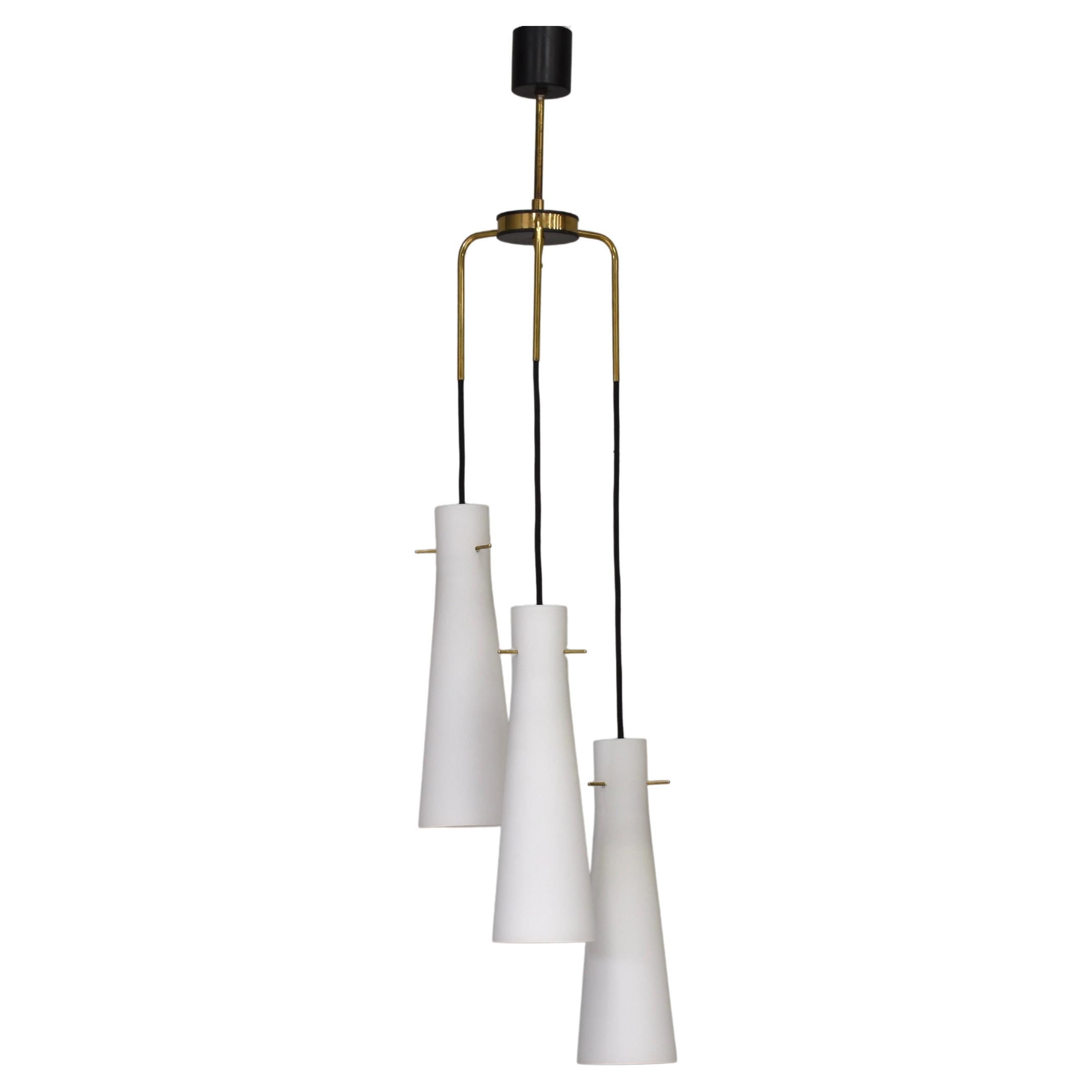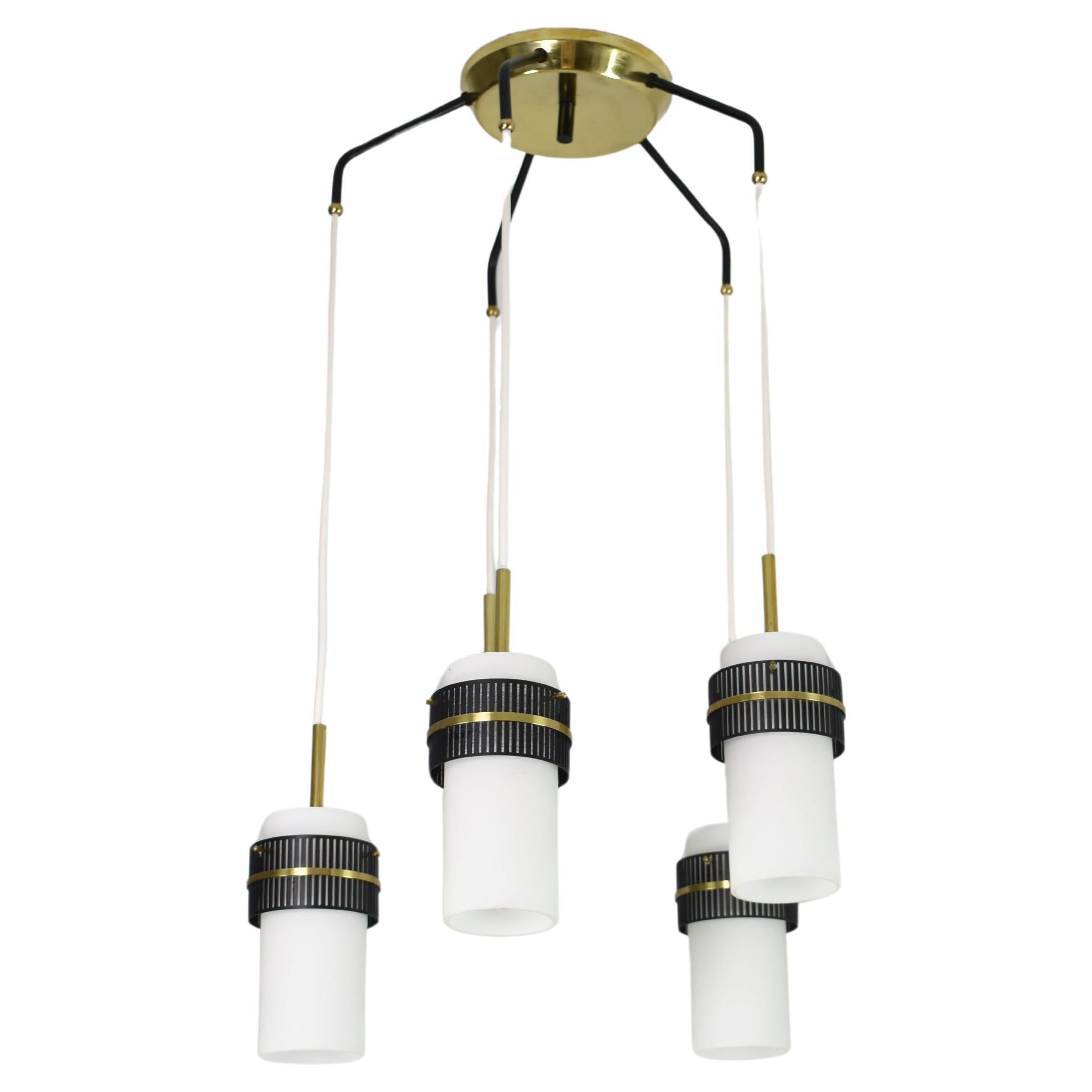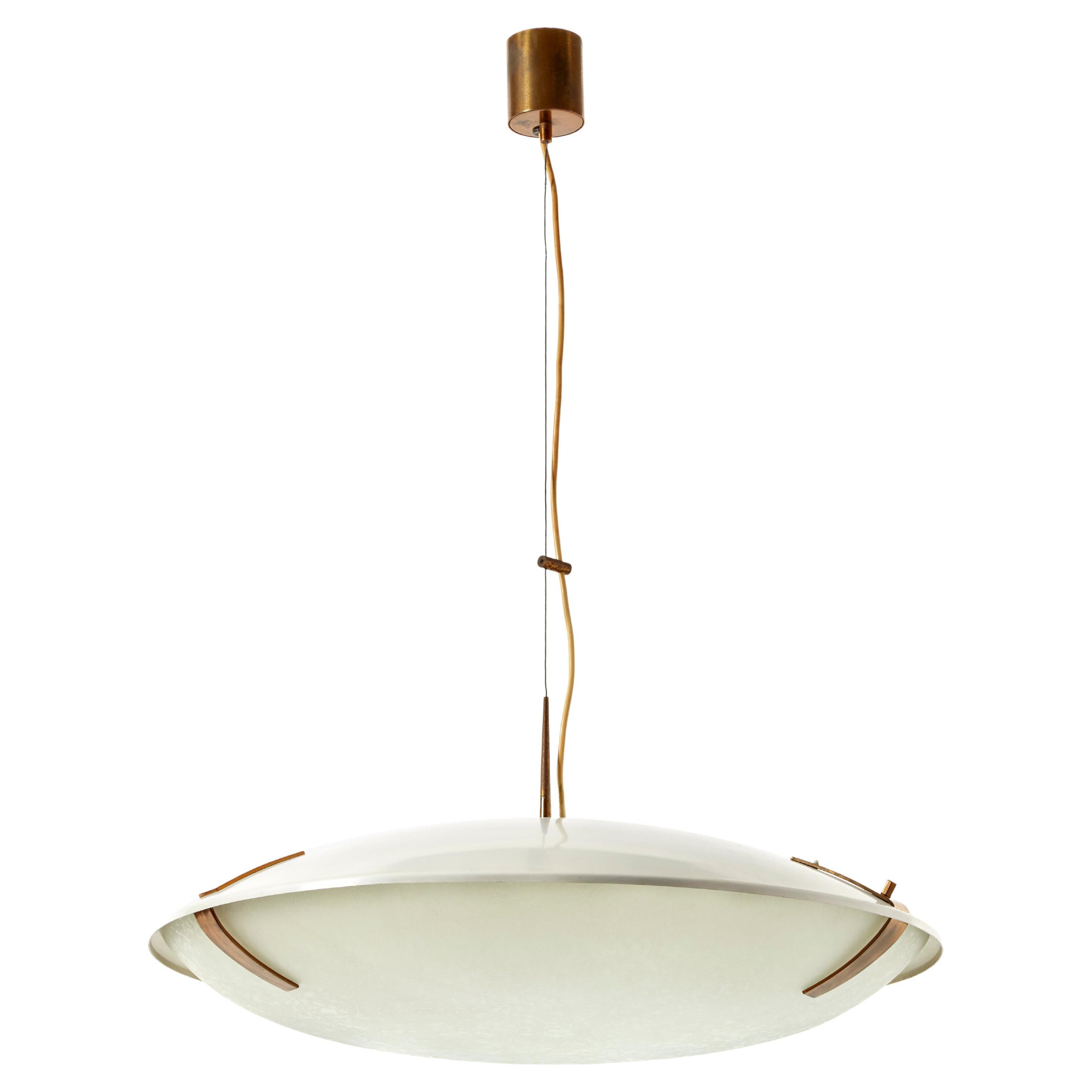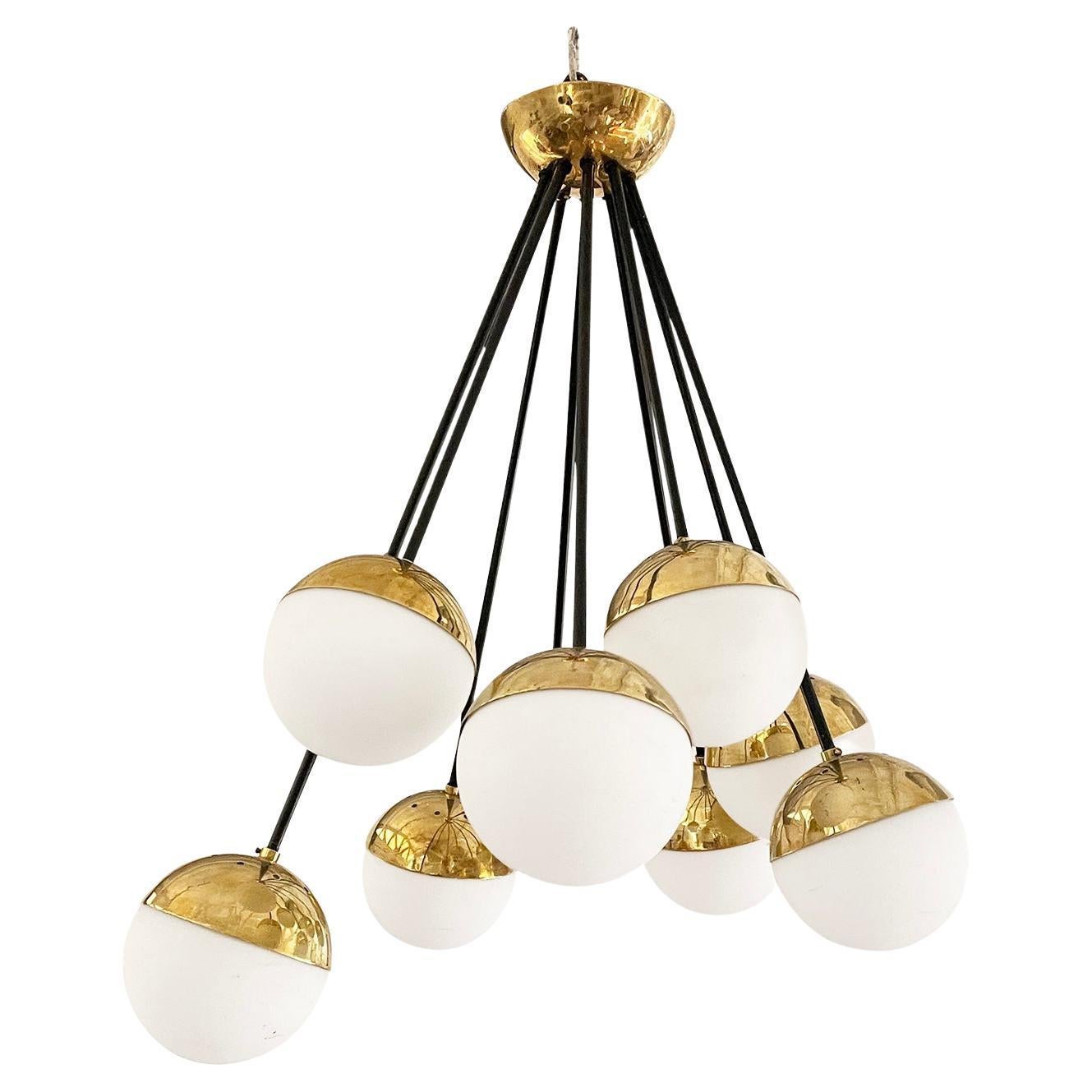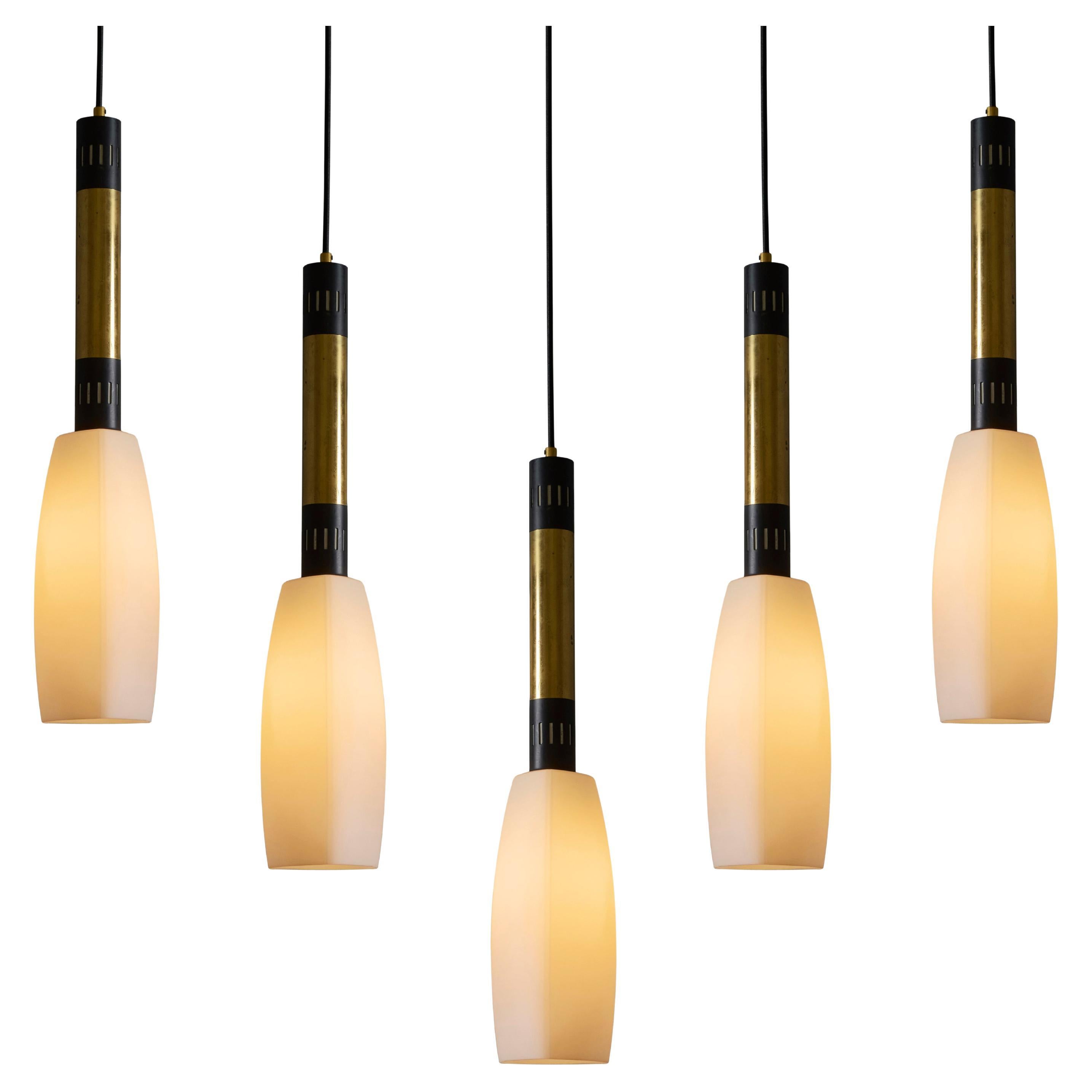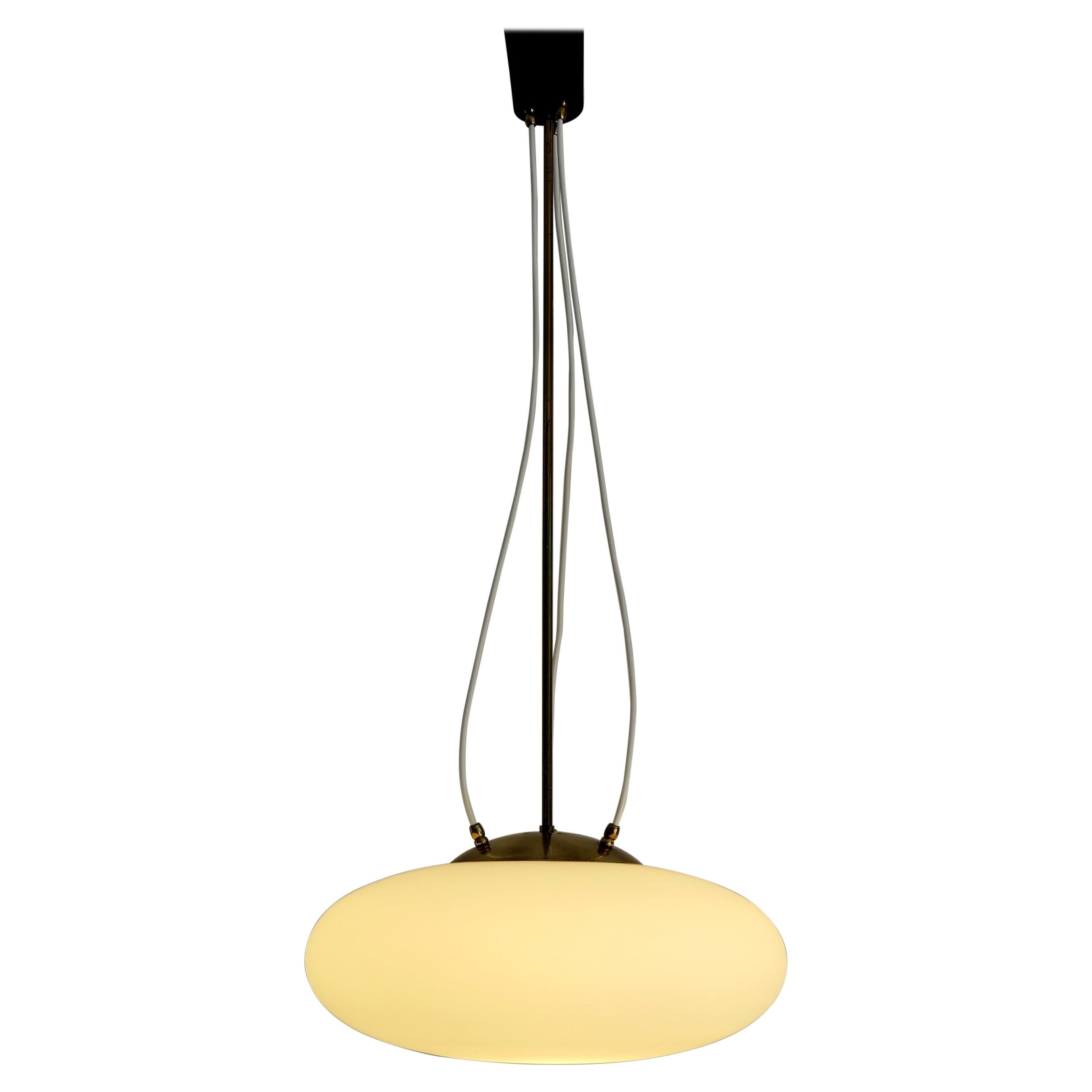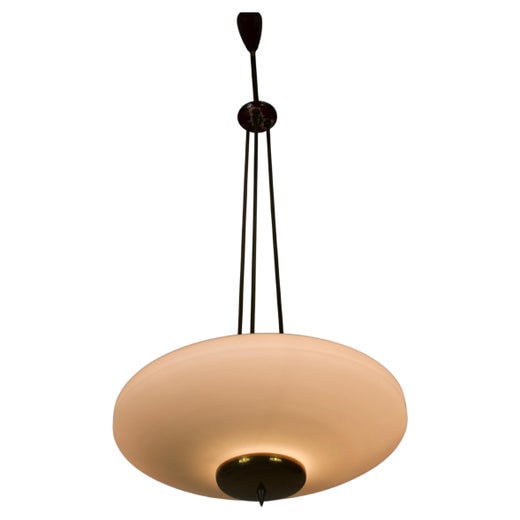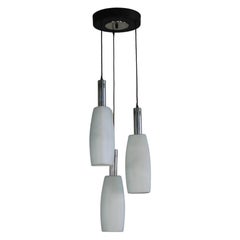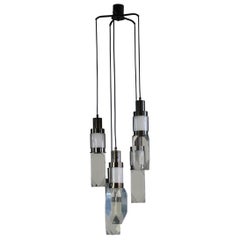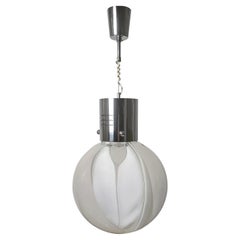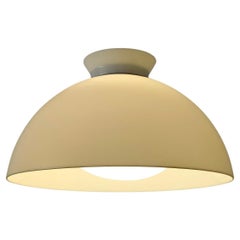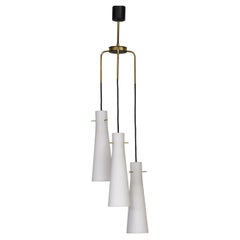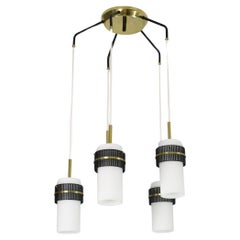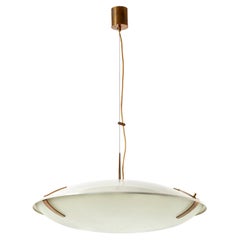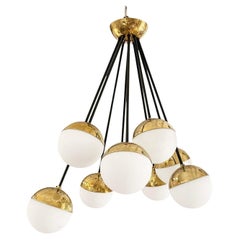Pendant Lamp with Five Elements in Opaline Glass by Stilnovo 1960s Italy
About the Item
- Creator:Stilnovo (Manufacturer)
- Dimensions:Height: 43.31 in (110 cm)Diameter: 17.72 in (45 cm)
- Power Source:Hardwired
- Style:Mid-Century Modern (Of the Period)
- Materials and Techniques:
- Place of Origin:
- Period:
- Date of Manufacture:1960s
- Condition:Wear consistent with age and use.
- Seller Location:Montecatini Terme, IT
- Reference Number:1stDibs: LU5304223110592
Stilnovo
Though Bruno Gatta founded Stilnovo way back in 1946, it is still one of the most instantly recognizable names in lighting. Gatta (1904–76) began his business in Milan, and, like many European creatives designing furniture and decor in the wake of World War II, he leaned toward the new wave of mass-market and streamlined styles. In fact, Stilnovo loosely translates to “new style” in Italian, and vintage Stilnovo chandeliers, floor lamps and other lighting have endured as a practical choice for those looking to bring innovative and forward-thinking design into their homes.
Soon after Stilnovo was established, Gatta’s lighting fixtures were applauded throughout Europe for their novel industrial materials as well as their unique yet functional shapes. Italy during the mid-20th century was completely revolutionary, and Bruno Gatta and Stilnovo’s head designer, Angelo Gaetano Sciolari, helped shape the era.
When the 1960s arrived, Stilnovo was experiencing such a boom that the company opened a new production plant in Lainate. One of the brand’s most famous pieces, Giovanni Luigi Gorgoni’s quirky 1965 Buonanotte spherical table lamp, became a best seller.
Gatta partnered with some of the most well-known names in design, including Ettore Sottsass, Achille and Pier Giacomo Castiglioni, Joe Colombo and Gae Aulenti. Sottsass’s pieces for Stilnovo, including the 1977 Valigia four-legged table lamp, the 1968 Lampros chandelier and Manifesto ceiling light, and the Castiglionis’ 1957 Saliscendi pendant light fixtures are some of the brand’s most recognizable to date. In 1978, De Pas, D’Urbino and Lomazzi designed the Fante lamp with an adjustable reflector that playfully recalls a broad-brimmed hat.
Stilnovo’s designs, including Danilo and Corrado Aroldi’s flexible Periscope table lamp, were featured in the 1972 exhibition “Italy: The New Domestic Landscape” at the Museum of Modern Art. While Stilnovo continued to operate with new designer collaborations after Gatta’s death, it closed its doors in 1988.
Italian art director Massimo Anselmi acquired the company in 2012 and rereleased several of Stilnovo’s most celebrated pieces. Then in 2019, lighting giant Linea Light Group purchased Stilnovo and relaunched its classic designs with contemporary touches like LED lighting systems.
Find vintage Stilnovo chandeliers and pendants, wall lights, table lamps and other fixtures and furniture on 1stDibs.
- ShippingRetrieving quote...Shipping from: Florence, Italy
- Return Policy
More From This Seller
View AllVintage 1970s Italian Mid-Century Modern Chandeliers and Pendants
Metal
Vintage 1970s Italian Mid-Century Modern Chandeliers and Pendants
Metal
Vintage 1960s Italian Mid-Century Modern Chandeliers and Pendants
Metal
Vintage 1960s Italian Mid-Century Modern Chandeliers and Pendants
Brass
Vintage 1970s Italian Post-Modern Chandeliers and Pendants
Metal
Vintage 1960s Italian Mid-Century Modern Chandeliers and Pendants
Brass, Nickel
You May Also Like
Vintage 1950s Italian Mid-Century Modern Chandeliers and Pendants
Brass
Vintage 1950s Italian Mid-Century Modern Chandeliers and Pendants
Brass
Vintage 1960s Italian Mid-Century Modern Chandeliers and Pendants
Aluminum, Brass, Wire
Mid-20th Century Italian Mid-Century Modern Chandeliers and Pendants
Metal, Brass
Vintage 1950s Italian Mid-Century Modern Chandeliers and Pendants
Brass
Vintage 1950s Italian Mid-Century Modern Chandeliers and Pendants
Brass
